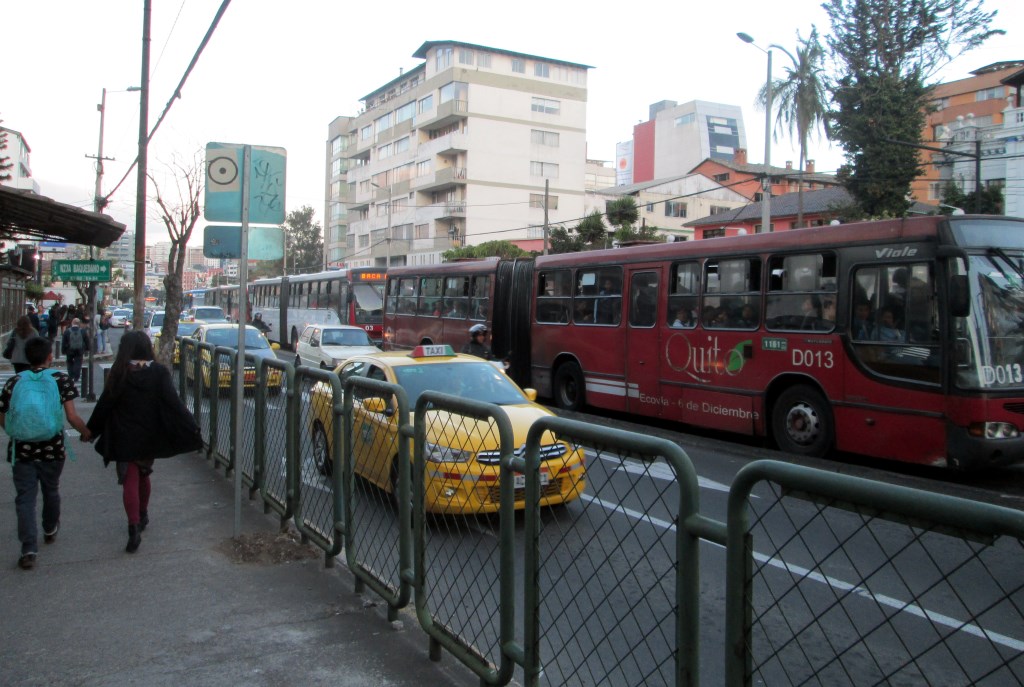With Milwaukee looking to implement a BRT system connecting downtown to the suburb of Wauwatosa, Ken Smith of Urban Milwaukee was eager to get a look at how BRT works in Quito, when he was in the city for the recent UN Habitat III summit. The system impressed him, and Smith wonders if Milwaukee will be able to duplicate the factors that make Quito's BRT successful:
The buses utilize the center-most lanes as dedicated lanes separated by thin concrete medians. Only emergency vehicles may additionally use the bus lanes. All other traffic is forced to use the four outermost lanes. In this way public transit is incentivized through greater speed unlike present buses in Wisconsin which are forced to drive in mixed traffic.
Congruent with the central lanes, the stops are designed to allow the buses to load at sidewalk level. The advantage of this over “kneeling” buses, which one may see in Milwaukee or Madison, is that while the latter is effective at helping people with difficulties stepping up, it inevitably delays bus travel. In a big city every second counts. Milwaukee County’s proposal intends to load at level.
BRT riders in Quito enter the covered stations on one side, pay their $0.25 fare, and exit out the other. Yes, the fare is 25 cents in actual United States coinage! This allows for efficient ingress and egress at each stop. Each station is likewise staffed to ensure rider payment. Details of Milwaukee’s BRT stations were not clear from publicly available documents, however, the proposal does intend to have fare payment prior to boarding.
Overall, my traveling companion and I found this model of transit highly efficient at moving people and buses as quickly as possible under the constraints of Quito’s built environment. The only possible critique we had was that private buses were forced to share space with mixed traffic. We thought it might be better to allow private buses to share the public bus lane to further incentivize bus use.
What are the takeaways for Milwaukee?
I found Quito’s BRT a cheap and convenient way to get around. Paying before entering the bus facilitated faster travel times and it was fun zipping through traffic faster than regular automobiles. Milwaukee’s BRT could be very helpful in making faster, affordable transportation available to everyone, particularly those lacking a car.
That being said, Milwaukee’s BRT is still very much in its infancy. The governments of the city, county, and Wauwatosa have only approved BRT conceptually. Now Milwaukee County can apply for federal funds. There has been no determination on whether or not the BRT lanes would run through the middle or sides of the road and the project is likely to face opposition from those who will dislike fewer street parking spaces and generally believe BRT is a waste of money. And winning a federal grant is crucial: without it the project is unlikely to proceed.
Elsewhere on the Network today: U.S. PIRG points out that in both red states and blue, transit was a winner on local ballots last Tuesday. And Seattle Transit Blog says that in the wake of Trump's election, with his emphasis on exclusion and building walls, cities "should have the self-awareness not to build our own virtual walls through socio-economic means."






